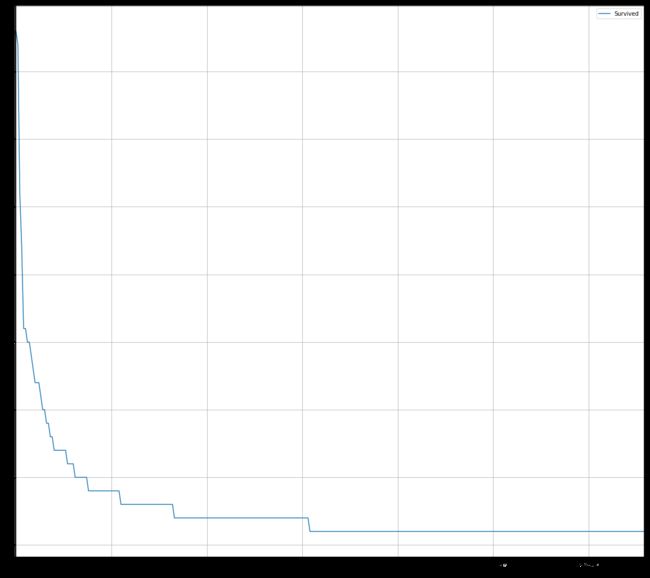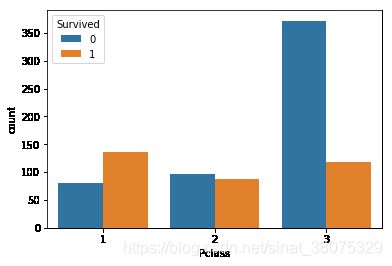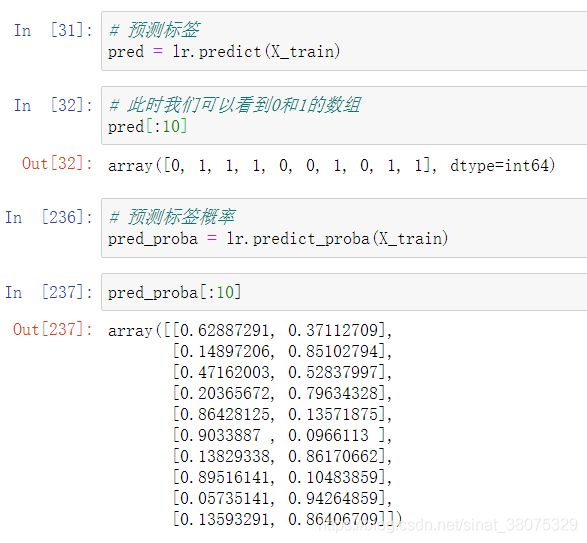数据分析业务逻辑
本文参考资料有:DataWhale《动手学数据分析》及互联网资源
本章难点突破:
- 数据分块读取
- 文本类数据标签转换
- 正则表达式应用于提取构建新的字符类特征
- 数据表的合并
难点补充学习
1.读取数据
载入数据时我们应当了解数据的存储格式,常见文件后缀有.txt, .xlsx, .csv, .json ,以上格式数据可使用pandas下的read_table,read_csv和read_json读取。如果数据量过大,还可设置具体的按块读取。
2.认识数据
当我们拿到数据表时,首先应当学会认识它们。回想我们使用excl浏览数据时观察的数据维度,可发现行(row),列(column)标签,各列的总数据量、是否存在null值、它们的数据类型,每个数据表的首尾几列数据都是我们认识数据的第一步。在python中,我们使用data.info()查看数据板信息,data.head()和data.tail()查看首尾数据,data.isnull()查看null值数据,data.describe()查看描述性统计分析等。初步了解数据行列信息及数据空值,数据类型情况后我们需要对数据表按条件处理,接下来会涉及数据的删除、填充、筛选、新数据列的形成、新数据关系维度表建立等。
3.数据处理
- 删除
#删除列
del df['a']
df.drop(['PassengerId','Name','Age','Ticket'],axis=1).head(3)- 填充
- 排序
frame.sort_values(by='c',ascending=False)
frame.sort_index(axis=1,ascendign=False)
frame.sort_values(by=['a','c'])- 筛选
print((df["Age"]<10).head(3))
midage=df[(df["Age"]>10)&(df["Age"]<50)]
midage=midage.reset_index(drop=True)
print(midage.head(3))
print(midage.loc[[100],['Pclass','Sex']])
print(midage.loc[[100,105,108],['Pclass','Name','Sex']])
print(midage.iloc[[100,105,108],[2,3,4])- 新列
- 新表
4.构建特征
对特征进行观察,可将其按数据类型(文本型、数值型等)分类,数值型数据可直接用于模型训练,文本型数据则需转换为数值型特征。
- 数值型分箱
df['AgeBand']=pd.cut(df['Age'],5,labels=['1','2','3','4','5'])
df['AgeBand']=pd.cut(df['Age'],[0,5,15,30,50,80],labels=['1','2','3','4','5'])
df['AgeBand']=pd.qcut(df['Age'],[0,0.1,0.3,0.5,0.7,0.9],labels=['1','2','3','4','5'])- 文本型转换
#将类别文本转换为12345
#方法一: replace
df['Sex_num'] = df['Sex'].replace(['male','female'],[1,2])
df.head()
#方法二: map
df['Sex_num'] = df['Sex'].map({'male': 1, 'female': 2})
df.head()
#方法三: 使用sklearn.preprocessing的LabelEncoder
from sklearn.preprocessing import LabelEncoder
for feat in ['Cabin', 'Ticket']:
lbl = LabelEncoder()
label_dict = dict(zip(df[feat].unique(), range(df[feat].nunique())))
df[feat + "_labelEncode"] = df[feat].map(label_dict)
df[feat + "_labelEncode"] = lbl.fit_transform(df[feat].astype(str))
df.head()
#将类别文本转换为one-hot编码
#方法一: OneHotEncoder
for feat in ["Age", "Embarked"]:
# x = pd.get_dummies(df["Age"] // 6)
# x = pd.get_dummies(pd.cut(df['Age'],5))
x = pd.get_dummies(df[feat], prefix=feat)
df = pd.concat([df, x], axis=1)
#df[feat] = pd.get_dummies(df[feat], prefix=feat)
df.head()- 从纯文本Name特征里提取出Titles的特征(所谓的Titles就是名字中的Mr,Miss,Mrs等)
df['Title']=df.Name.str.extract('([A-Za-z]+)\.',expand=False)
print(df.head())
PassengerId Survived Pclass ... Embarked AgeBand Title
0 1 0 3 ... S 2 Mr
1 2 1 1 ... C 5 Mrs
2 3 1 3 ... S 3 Miss
3 4 1 1 ... S 4 Mrs
4 5 0 3 ... S 4 Mr
[5 rows x 14 columns]
[Finished in 1.6s]- 将两个表按横纵方向合并
#使用concat
text_left_up = pd.read_csv("C:/Users/HP/Desktop/doc/data/u2/data/train-left-up.csv")
text_left_down = pd.read_csv("C:/Users/HP/Desktop/doc/data/u2/data/train-left-down.csv")
text_right_up = pd.read_csv("C:/Users/HP/Desktop/doc/data/u2/data/train-right-up.csv")
text_right_down = pd.read_csv("C:/Users/HP/Desktop/doc/data/u2/data/train-right-down.csv")
list_up=[text_left_down,text_right_down]
result_up=pd.concat(list_up,axis=1)
print(result_up.head())
list_down=[text_left_down,text_right_down]
result_down=pd.concat(list_down,axis=1)
result=pd.concat([result_up,result_down])
print(result.head())
#使用DataFrame的join和append
result_up=text_left_up.join(text_right_up)
result_down=text_left_down.join(text_right_down)
result=result_up.append(result_down)
print(result.head())
#使用DataFrame的merge方法和append
result_up=pd.merge(text_left_up,text_right_up,left_index=True,right_index=True)
result_down=pd.merge(text_left_down,text_right_down,left_index=True,right_index=True)
result=result_up.append(result_down)
print(result.head())- 计算数值得到新特征
text=pd.read_csv('C:/Users/HP/Desktop/doc/data/u2/result.csv')
df=text['Fare'].groupby(text['Sex'])
means=df.mean()
print(means)
survived_sex=text['Survived'].groupby(text['Sex']).sum()
print(survived_sex.head())
survived_pclass=text['Survived'].groupby(text['Pclass'])
print(survived_pclass.sum())
print(text.groupby(['Pclass','Age'])['Fare'].mean().head())
result=pd.merge(means,survived_sex,on='Sex')
print(result)
survived_age=text['Survived'].groupby(text['Age']).sum()
survived_age[survived_age.values==survived_age.max()]
5.数据可视化
这里将学习【Seaborn和Matplotlib】,Seaborn相比matplotlib封装了一些对数据的组合和识别的功能;用Seaborn出一些针对seaborn的图表是很快的,比如说分布图、热图、分类分布图等。如果用matplotlib需要先group by先分组再出图;
import numpy as np
import pandas as pd
import matplotlib.pyplot as plt
text=pd.read_csv(r'C:/Users/HP/Desktop/doc/data/u2/result.csv')
print(text.head())
sex=text.groupby('Sex')['Survived'].sum()
sex.plot.bar()#柱状图
plt.title('survived_count')
plt.show() #比例柱状图
text.groupby(['Sex','Survived'])['Survived'].count().unstack().plot(kind='bar',stacked='True')
plt.title('survived_count')
plt.ylabel('count')
#排序后绘折线图
fare_sur=text.groupby(['Fare'])['Survived'].value_counts().sort_values(ascending=False)fig=plt.figure(figsize=(20,18))
fare_sur.plot(grid=True)
plt.legend()
plt.show()
#排序前绘折线图
fare_sur1=text.groupby(['Fare'])['Survived'].value_counts()fig=plt.figure(figsize=(20,18))
fare_sur1,plot(grid=True)
plt.legend()
plt.show()
pclass_sur=text.groupby(['Pclass'])['Survived'].value_counts()
import seaborn as sns
sns.countplot(x='Pclass',hue='Survived',data=text)
facet=sns.FacetGrid(text,hue="Survived",aspect=3)
facet.map(sns.kdeplot,'Age',shade=True)
facet.set(xlim=(0,text['Age'].max()))
facet.add_legend()
6.模型建立和评估
之前已经对数据信息有了基本了解,并进行了探索性分析和数据重构,还对数据进行了可视化分析。那么接下来我们需要将之前的工作集中运用到模型建立中。模型建立和评估包括特征工程、模型搭建、模型评估三部分,其中特征构成对应着数据重构,这部分内容中,我们主要对数据进行缺失值填充、编码分类变量;模型搭建中将切割数据集为训练集和测试集,切割的方法有按比例切割,一般测试集的比例有30%、25%、20%、15%、10% ;按目标变量分层进行等比切割;设置随机种子以便结果能复现。切割数据集是为了后续能评估模型泛化能力。
sklearn之train_test_split()函数各参数含义
X_train,X_test, y_train, y_test =sklearn.model_selection.train_test_split(train_data,train_target,test_size=0.4, random_state=0,stratify=y_train)
train_data:所要划分的样本特征集
train_target:所要划分的样本结果
test_size:样本占比,可以为浮点、整数或None,默认为None
-
①若为浮点时,表示测试集占总样本的百分比
-
②若为整数时,表示测试样本样本数
-
③若为None时,test size自动设置成0.25
train_size:可以为浮点、整数或None,默认为None
-
①若为浮点时,表示训练集占总样本的百分比
-
②若为整数时,表示训练样本的样本数
-
③若为None时,train_size自动被设置成0.75
random_state:可以为整数、RandomState实例或None,默认为None
-
①若为None时,每次生成的数据都是随机,可能不一样
-
②若为整数时,每次生成的数据都相同
stratify:可以为类似数组或None
-
①若为None时,划分出来的测试集或训练集中,其类标签的比例也是随机的
-
②若不为None时,划分出来的测试集或训练集中,其类标签的比例同输入的数组中类标签的比例相同,可以用于处理不均衡的数据集
简单来说, random_state保证了每次得到一样的随机数,stratify保证了training集和testing集的类的比例与原来的比例一致
#https://www.cnblogs.com/Yanjy-OnlyOne/p/11288098.html
【思考】
- 什么情况下切割数据集的时候不用进行随机选取
#思考回答
在数据集本身已经是随机处理之后的,或者说数据集非常大,内部已经足够随机了
train = pd.read_csv('train.csv')
train.head()
PassengerId Survived Pclass Name Sex Age SibSp Parch Ticket Fare Cabin Embarked
0 1 0 3 Braund, Mr. Owen Harris male 22.0 1 0 A/5 21171 7.2500 NaN S
1 2 1 1 Cumings, Mrs. John Bradley (Florence Briggs Th... female 38.0 1 0 PC 17599 71.2833 C85 C
2 3 1 3 Heikkinen, Miss. Laina female 26.0 0 0 STON/O2. 3101282 7.9250 NaN S
3 4 1 1 Futrelle, Mrs. Jacques Heath (Lily May Peel) female 35.0 1 0 113803 53.1000 C123 S
4 5 0 3 Allen, Mr. William Henry male 35.0 0 0 373450 8.0500 NaN S6.1缺失值填充
- 对分类变量缺失值:填充某个缺失值字符(NA)、用最多类别的进行填充
- 对连续变量缺失值:填充均值、中位数、众数
使用fillna函数
# 对分类变量进行填充
train['Cabin'] = train['Cabin'].fillna('NA')
train['Embarked'] = train['Embarked'].fillna('S')# 对连续变量进行填充
train['Age'] = train['Age'].fillna(train['Age'].mean())
6.2编码分类变量
# 取出所有的输入特征
data = train[['Pclass','Sex','Age','SibSp','Parch','Fare', 'Embarked']]# 进行虚拟变量转换
data = pd.get_dummies(data)
data.head()
Pclass Age SibSp Parch Fare Sex_female Sex_male Embarked_C Embarked_Q Embarked_S
0 3 22.0 1 0 7.2500 0 1 0 0 1
1 1 38.0 1 0 71.2833 1 0 1 0 0
2 3 26.0 0 0 7.9250 1 0 0 0 1
3 1 35.0 1 0 53.1000 1 0 0 0 1
4 3 35.0 0 0 8.0500 0 1 0 0 16.3切割数据集
from sklearn.model_selection import train_test_split
# 一般先取出X和y后再切割,有些情况会使用到未切割的,这时候X和y就可以用
X = data
y = train['Survived']
# 对数据集进行切割
X_train, X_test, y_train, y_test = train_test_split(X, y, stratify=y, random_state=0)
# 查看数据形状
X_train.shape, X_test.shape6.4模型建立
from sklearn.linear_model import LogisticRegression
from sklearn.ensemble import RandomForestClassifier
# 默认参数逻辑回归模型
lr = LogisticRegression()
lr.fit(X_train, y_train)
# 查看训练集和测试集score值
print("Training set score: {:.2f}".format(lr.score(X_train, y_train)))
print("Testing set score: {:.2f}".format(lr.score(X_test, y_test)))
#Training set score: 0.80
#Testing set score: 0.78
# 调整参数后的逻辑回归模型
lr2 = LogisticRegression(C=100)
lr2.fit(X_train, y_train)
print("Training set score: {:.2f}".format(lr2.score(X_train, y_train)))
print("Testing set score: {:.2f}".format(lr2.score(X_test, y_test)))
#Training set score: 0.80
#Testing set score: 0.79
# 默认参数的随机森林分类模型
rfc = RandomForestClassifier()
rfc.fit(X_train, y_train)
print("Training set score: {:.2f}".format(rfc.score(X_train, y_train)))
print("Testing set score: {:.2f}".format(rfc.score(X_test, y_test)))
#Training set score: 0.98
#Testing set score: 0.81
# 调整参数后的随机森林分类模型
rfc2 = RandomForestClassifier(n_estimators=100, max_depth=5)
rfc2.fit(X_train, y_train)
print("Training set score: {:.2f}".format(rfc2.score(X_train, y_train)))
print("Testing set score: {:.2f}".format(rfc2.score(X_test, y_test)))
#Training set score: 0.85
#Testing set score: 0.836.5输出模型预测结果
- 输出模型预测分类标签
- 输出不同分类标签的预测概率
比如此处输出的pred[:10]就是训练集中的前十行数据中每一行数据对应的预测结果,即每一位乘客的存活情况,若存活,则为1,反之为0; pred_proba[:10] 表示前十行数据中每一行数据对应的存活和未存活的概率。
6.6模型评估
- 模型评估是为了知道模型的泛化能力。
- 交叉验证(cross-validation)是一种评估泛化性能的统计学方法,它比单次划分训练集和测试集的方法更加稳定、全面。
- 在交叉验证中,数据被多次划分,并且需要训练多个模型。
- 最常用的交叉验证是 k 折交叉验证(k-fold cross-validation),其中 k 是由用户指定的数字,通常取 5 或 10。
- 准确率(precision)度量的是被预测为正例的样本中有多少是真正的正例
- 召回率(recall)度量的是正类样本中有多少被预测为正类
- f-分数是准确率与召回率的调和平均





